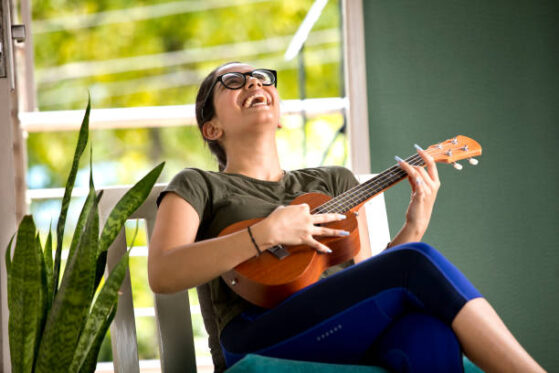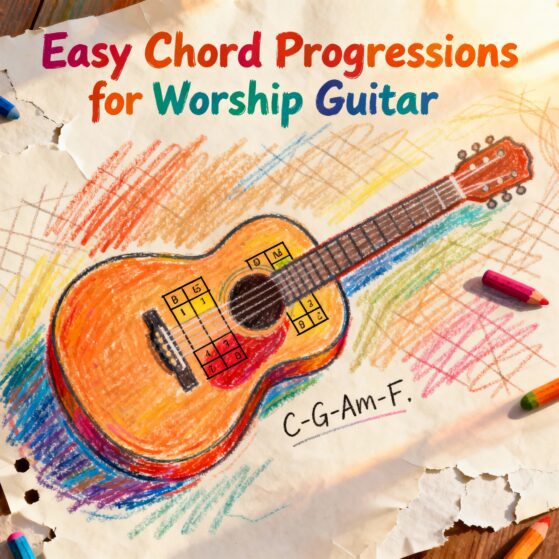Left vs. Right-Hand Ukulele Playing | What to Know
The ukulele brings joy and accessibility to players of all ages and skill levels around the world. As a beginner ready to strum your first chord or an experienced musician aiming to grow your skills, you’ll face an important decision early on: will you play left-handed or right-handed? Your choice in this Left vs. Right-Hand Ukulele debate directly shapes your comfort, technique, and overall learning experience. In this blog, we’ll guide you through everything you need to know about both playing styles, helping you make a clear, confident decision that suits your natural tendencies and musical goals.

Understanding Handedness in Ukulele Playing
Before diving into the nuances of ukulele playing styles, let’s first understand what “handedness” means in the context of Left vs. Right-Hand Ukulele playing. Most stringed instruments, including the ukulele, follow a traditional right-handed design. In this setup, players use their left hand on the fretboard to press down strings and form chords or notes, while the right hand strums or plucks the strings to create sound.
Right-handed players usually find this arrangement intuitive because their dominant right hand takes charge of the rhythm and dynamics of strumming, while the left hand focuses on finger placement and chord transitions.
So what happens when a player is left-handed? Should they flip the setup and opt for a left-handed ukulele? Or can they adapt to the standard right-handed format? These questions lie at the heart of the Left vs. Right-Hand Ukulele debate and raise important considerations around comfort, adaptability, and learning preferences.

What Does Left-Handed Ukulele Playing Mean?
A left-handed ukulele mirrors the traditional right-handed model. Manufacturers arrange the strings so that when players hold the instrument in their left hand, they fret with their dominant hand and strum with the right. This setup allows left-handed individuals to use their stronger hand for fretting, which many find more natural and comfortable than strumming.
There are generally two ways left-handed players approach the ukulele:
1. Play a Left-Handed Ukulele: Some left-handed players choose to buy or restring a ukulele specifically made for left-handed playing. The instrument is flipped so that the thickest string is at the bottom when held left-handed, mirroring the right-handed version.
2. Adapt to a Right-Handed Ukulele: Other left-handed players opt to learn on a standard right-handed ukulele. Despite the initial awkwardness, many find this method manageable and even advantageous over time.

Advantages of Playing Right-Handed — Even if You’re Left-Handed
Interestingly, a significant number of left-handed players choose to learn ukulele right-handed. Here’s why:
Availability and Cost: Right-handed ukuleles dominate the market. Left-handed models are less common and sometimes more expensive or harder to find. Starting on a right-handed ukulele opens up more choices and can be more budget-friendly.
Instruction and Resources: Most tutorials, lessons, chord charts, and videos assume right-handed playing. By learning right-handed, lefties can follow along more easily without needing mirrored instructions.
Ambidexterity Development: Learning to use your non-dominant hand for fretwork can improve overall hand coordination and flexibility. This can be a beneficial skill in the long run.
Ease of Switching Instruments: If you decide to play other stringed instruments later, like guitar or bass, the standard right-handed orientation remains the norm. Learning right-handed ukulele can prepare you for this transition.
Social and Performance Situations: Playing right-handed can help you blend in easily with other players and band setups that expect right-handed orientation.

Advantages of Playing Left-Handed
That said, there are clear advantages to playing a ukulele left-handed for those who find it more natural:
Comfort and Ergonomics: Holding the instrument in the dominant hand can feel more natural and comfortable, especially during long practice sessions or performances.
Faster Learning Curve: For some left-handed beginners, starting with their dominant hand on the fretboard allows them to form chords and finger movements more quickly.
Personal Preference: Music is personal. If you instinctively feel left-handed playing fits your style, it may enhance your confidence and enjoyment.
Unique Style: Left-handed players sometimes develop a distinctive playing style that can set them apart musically.

Considerations When Choosing Between Left-Handed and Right-Handed Ukulele
While preferences vary, here are some practical considerations to help you decide which route to take:
1. Your Natural Dominance and Coordination
Which hand do you write with? Do you feel more dexterous or coordinated with one hand?
Do you play other instruments or sports that require hand coordination? How does your handedness translate in those activities?
2. Accessibility and Cost
Check availability of left-handed ukuleles locally or online.
Consider cost differences between standard and left-handed models.
3. Learning Resources
Evaluate whether you want to learn from videos, tutorials, or teachers who primarily teach right-handed ukulele.
If you go left-handed, be prepared to adapt or find resources tailored to your style.
4. Instrument Setup and Maintenance
Restringing or flipping a ukulele to accommodate left-handed playing requires care to avoid damage.
Some instruments are designed specifically for one handedness, with bracing and construction favoring that orientation.
5. Long-Term Goals
Think about whether you might want to switch to other instruments.
Consider your interest in joining ensembles or bands where handedness might matter.

How to Play Left-Handed Ukulele
If you decide to go left-handed, here’s what you need to know:
Purchase a Left-Handed Ukulele: This is the easiest way, as the instrument is designed for left-handers.
Restring a Right-Handed Ukulele: If you have a right-handed ukulele, you can restring it by reversing the order of the strings to mirror a left-handed setup. However, this can affect the instrument’s setup and may require professional adjustment.
Left-Handed Playing Technique: The left hand will fret the notes on the neck while the right hand strums. You’ll need to practice chord shapes and strumming patterns accordingly.

How to Adapt as a Left-Handed Player on a Right-Handed Ukulele
When navigating the Left vs. Right-Hand Ukulele dilemma, many left-handed players choose to play right-handed for better accessibility and learning resources. If you decide to go this route, follow these tips to ease your transition. Practice finger independence by starting with simple chord shapes—this helps your non-dominant left hand get used to fretting accurately. Strum confidently with your dominant right hand, using its natural rhythm and strength to bring expression to your playing. Stay patient—while it might feel awkward at first, regular practice will build dexterity over time. Watch yourself in a mirror or record videos to observe and refine your technique. And finally, take lessons if possible—a skilled teacher can tailor their instruction to your handedness and help you progress more efficiently.

Famous Left-Handed Ukulele Players
Right-handed players may dominate the ukulele world, but many left-handed musicians have carved out their own place in music history. They prove that handedness influences style, but doesn’t define it.
Jake Shimabukuro plays primarily right-handed, but he actively experiments with left-handed techniques to showcase his versatility.
Legendary guitarists like Jimi Hendrix embraced left-handed playing and revolutionized stringed instrument techniques. Their bold approach continues to inspire ukulele players to explore handedness as a creative choice rather than a limitation.

Conclusion | There Is No “Wrong” Way to Play the Ukulele
You make your choice in the Left vs. Right-Hand Ukulele debate based on what feels most comfortable, natural, and aligned with your musical goals. Each style offers its own advantages and challenges, but neither one proves universally better.
If you’re a left-handed beginner, try out both methods. Borrow ukuleles, follow a few tutorials, and test which playing style suits you best. Since the ukulele celebrates creativity and self-expression, pick the approach that lets you play with ease and confidence.
At The Mystic Keys, we support your journey with personalized Ukulele Lessons Online for both left- and right-handed players. Our experienced instructors guide you step by step, helping you develop solid technique, no matter which hand you lead with.
As you progress through the Left vs. Right-Hand Ukulele journey, stick to consistent practice, trust your growth, and play with heart. When you stay passionate and focused, you unlock the true joy of mastering the ukulele.
For more information and exciting resources about learning music, visit our website at The Mystic Keys. For more music content and exciting offers follow us on
Facebook, Instagram, YouTube, LinkedIn, Twitter, Pinterest, and Threads,








